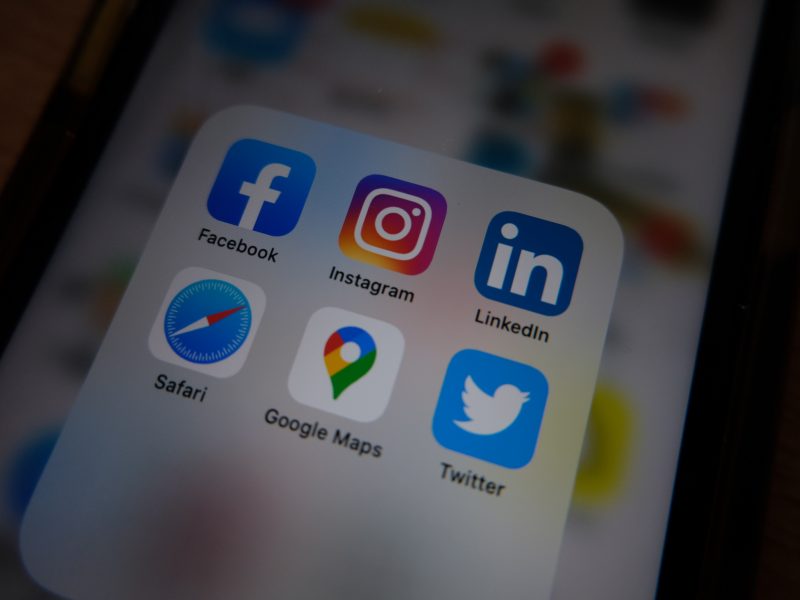Social… Digital… Relevance? Still not convinced that they produce ROI, let’s look at how they contribute to your business.

Ironically, in opposition to the purpose of this article, you are (most likely) reading this in a printed version of ARN. However, I’m sure that on a daily basis, as you travel on public transport heading to or from work, or while you wait for your coffee at the local café, you are on your mobile device, tablet or laptop reviewing updates on Twitter, LinkedIn, Instagram and Facebook, whilst simultaneously checking your work emails and answering phone calls. You might also be reading various digital newsletters that you subscribe to, or watching a recorded webinar that you didn’t get a chance to see last week. And while you do this, click-throughs, downloads, page views, cookies, sentiment, your IP address, geo-tracking etc. are all being recorded and analysed. It’s also prompting someone to either email or call you, unless they need to wait until your persona rating deems you ready for engagement.
If you, as an individual, are consuming all manner of content primarily via social and digital channels, then you know that your organisation must contribute regular content in all relevant formats to stay ‘top of mind’. Case studies, datasheets, e-books, whitepapers, webinars, podcasts, videos, blogs, surveys, infographics, presentations…. There are so many content options, but no matter what you create or where you choose to post it, make sure it always points back to your website, and that it integrates with your CRM or marketing automation software. This is where the relevance comes into play, otherwise you can’t easily track the impact and reach of your content, or use insights to then tailor communications to key audiences.
Now, I’d like you to consider the implications of not investing time and money in either social or digital strategies. Unless you have a completely unique and game-changing offer, you are going to be competing for customers in an existing, possibly even crowded market. You will then need to use every single opportunity to promote your brand, value proposition and offerings to ensure you are heard above the noise. Therefore, social and digital strategies must be implemented as they have far-reaching capabilities. If you don’t, no one will notice you, no one will be able to easily search for you, and no one will choose you as their preferred supplier for the products and/or services you offer. It’s that simple!
Let’s break this down further so you can see their true impact and influence on your business. When you are designing your marketing strategy, you will need to decide how much to spend in certain key areas. I’m going to highlight what’s involved in these areas and the relationship of social and digital marketing strategies within each one.
1. Awareness Campaigns
A percentage of your total annual marketing budget should be spent on B2B awareness campaigns (this may include a PR company on retainer). The nature of awareness campaigns requires a combination of social, digital and print advertising in conjunction with marketing tactics/offers. It also incorporates thought-leadership which is mainly delivered and acknowledged through social and digital channels, via the sharing of your expertise and insights on a grand scale – this can only be achieved using social and digital platforms to increase your reach, readership, followership and to promote your personal brand.
2. Top and Upper Funnel Campaigns
Combine your awareness campaigns with top and upper funnel B2B marketing activities such as content syndication campaigns, trade shows, industry or analyst conferences and industry association memberships (where you can sponsor events and spruik your business on their websites).
- Content syndication campaigns are digital campaigns and you can track personas and buying cycles based on the content individuals consume. This is done in accordance with a points scale attributed to each piece of content included within the campaign.
- Trade shows require a combination of social and digital marketing tactics in the promotion of the event and for the activations designed to drive traffic to your booth, attend your presentations and to sign up for demonstrations or free trials. You will also need both digital and social strategies built into your lead generation programme at the conclusion of the event to help strengthen your response rates, and in the design of a nurture programme.
3. Mid Funnel Events and Campaigns
These also rely heavily on an investment in social and digital strategies to ensure success.
- Targeted email and social media campaigns announcing information or requesting people to download an asset
- Online event invitations and registrations
- Online surveys which generates content for an e-book or whitepaper. You then provide a gated asset for download
- Live posts and tweets from your own events
In my opinion, when devising an overall marketing strategy for your business, social and digital marketing strategies, techniques and tactics are inescapable. They are not only relevant, but integral to your overall marketing and business strategies to guarantee success. But how do you determine whether a social or digital marketing strategy has been implemented successfully? How do you gauge ROI from something that seems completely subjective? Firstly, you need to understand that social media alone is great for awareness, but it’s unlikely to generate a defined business lead which transacts in a sale. Social media in the B2B space isn’t transactional like it is when targeting consumers – think of online retailers, and the tactics they apply to grab your attention, e.g. click frenzy campaigns.
In the B2B world, social media marketing success is calculated by the number of people who react and engage with your posts – you may get people to join a webinar, download an e-book or other asset, visit your website or sign up to your newsletter, but a whole lot more nurturing needs to be implemented to move potential customers through the funnel into a qualified lead, before they will even transact with you. Social media marketing will be part of your integrated marketing campaigns to reach broad-based or targeted audiences. Boosting posts will help you reach audiences beyond your organic sphere of followers, but again, that’s more about awareness and driving traffic to your website or key assets so they can learn more about you.
Digital marketing is also great for awareness but you can achieve more tangible results here depending on the type of programme you run. For example, a content syndication campaign which requires a variety of assets to be seeded onto a platform will track personas, and what stage a person or business is at within the buying cycle. This type of programme can lead more directly to a qualified lead, and depending on the length of your sales cycle, you may be closing a sale within one to six months.
There are so many ways to leverage the power of social media and digital marketing to grow your business, build brand awareness and promote key individuals as thought-leaders or subject matter experts. But if you aren’t comfortable designing and implementing these types of strategies yourself, reach out to experts who also understand your business so that you are guaranteed to attract and reach the right audiences.


